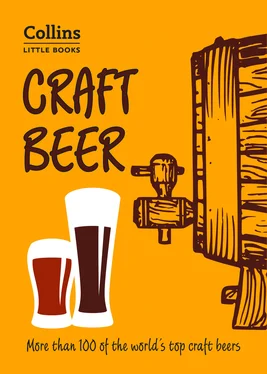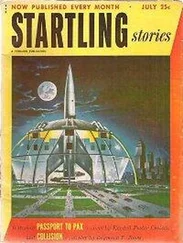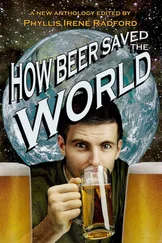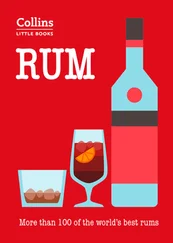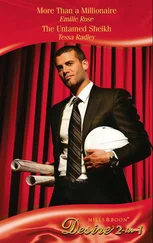Copyright
HarperCollins Publishers
Westerhill Road
Bishopbriggs
Glasgow
G64 2QT
First Edition 2018
© HarperCollins Publishers 2018
Ebook Edition © February 2018 ISBN: 9780008271213
Version: 2018-03-01
Collins® is a registered trademark of HarperCollins Publishers Limited
www.collins.co.uk
A catalogue record for this book is available from the British Library
Author: Dominic Roskrow
All rights reserved under International and Pan-American Copyright Conventions. By payment of the required fees, you have been granted the nonexclusive, nontransferable right to access and read the text of this e-book on-screen. No part of this text may be reproduced, transmitted, downloaded, decompiled, reverse-engineered, or stored in or introduced into any information storage and retrieval system, in any form or by any means, whether electronic or mechanical, now known or hereafter invented, without the express written permission of HarperCollins e-books.
HarperCollins does not warrant that www.collins.co.ukor any other website mentioned in this title will be provided uninterrupted, that any website will be error-free, that defects will be corrected, or that the website or the server that makes it available are free of viruses or bugs. For full terms and conditions please refer to the site terms provided on the website.
HarperCollinsPublishers has made every reasonable effort to ensure that any picture content and written content in this ebook has been included or removed in accordance with the contractual and technological constraints in operation at the time of publication.
Contents
Cover
Title Page
Copyright
Talking about a revolution
What is a craft beer?
Beer styles
A – Z of craft beers
3 Monts
Abominable Winter Ale
Amarillo Sour
Anchor Porter
Anosteké
Audit Ale
Axe Edge
Backyard Lazy Daze
Bam Noire
Battledown Original
Bede’s Chalice
Beyond Modus IV
Bitter & Twisted
Black Bishop
Black Grouse
Bling Bling
Bluebird Premium XB
Boundary Export Stout
Bracia
Broken Dream
Brooklyn Lager
Brugse Zot Blond
Buxton Anglo-Belgique
Calypso
Caribbean Chocolate Cake
Casey Saison
Celis White
Clogwyn Gold
Coolship Cerise
Crafty Dan 13 Guns
Cross Bones
Cuvee de Tomme
De Ranke XXX-Bitter
Dead Pony Club
Dennis Hopp’r
Ein Stein
Engine Vein
Ensorcelled
Falkon Kamsot
Farmer’s Reserve Blueberry
Farmhouse Red
First World Problems
FMB 101
Foundation 11
Fraoch Ale
Freedom Amber Rye
Friday
Funk
Gadds’ No 3
Gentleman’s Wit
Ghost Ship
Ginormous
Gonzo Imperial Porter
Goose IPA
Green Devil
Gueuze Tilquin à l’Ancienne
Guldenberg
Gunnamatta Earl Grey IPA
Halcyon
Hardknott Azimuth
Headless
Heart & Soul
Hibernation
Hof ten Dormaal Saison
Hop Gun
Hop Hog
Hopfenstopfer Citra Ale
Howling Pils
Imperial Extra Double Stout
Jaipur
Jambe-de-Bois
Jambo!
Kaleidoscope
Kasteel Rouge
Keller Pils
Kernel Pale Ale
Kingpin
Kiwanda
Kiwi Rising
Kuehnes Blonde
La Corne du Bois des Pendus Tripel
Lazy Haze
Mariana Trench
Midnight Sun
Mont des Cats Bière Trappiste
Mr Trotter’s Chestnut Ale
Noblesse VSOP
Old Freddy Walker
Passion Drop
Peanut Butter Milk Stout
Peppercorn Saison
Polygraph
Proper Job
Punk IPA
Quartz Heart
Quintet
Radical Road
Red Sky
Rhetoric Edition 4.1
Rübaeus
Saison à la Provision
Salty Kiss Gooseberry Gose
Shape Shifter
Siberia Rhubarb Saison
Single Hop Kohatu Mango Femme Fatale
Sour Grapes
Sourdough
Stateside Saison
Sun Dazed
Sunday
Tempest Harvest
Three Grain Belgian Blonde
Ticketybrew Dubbel
Tournay Noire
Twilight of the Idols
Urban Fox
Whitewalker
Wolf
Worker’s Comp
Wu Gang Chops the Tree
Index
Picture Credits
About the Author
About the Publisher
Talking about a revolution
Take a look at today’s craft brewing industry and it’s hard to believe that as recently as the turn of the millennium the perception of beer brewing was of scruffy, hippy types in sandals, geekily discussing secondary fermentations.
Back then it was all about real ale in the United Kingdom, and about proper beer in America. To outsiders the battle for beer was just that – a campaign against mass produced and homogenous beer, and especially lager. Unless it was a lager produced in Continental Europe. Or in a garage in Portland, Oregon.
The problem was that some of the alternatives weren’t particularly appealing. Flat, scuzzy, cloudy concoctions might have been considered real by the diehards, but for many of the rest of us, they were just really bad.
Around that time, though, something changed. And when it did, it changed fast.
As Editor of Beers of the World , I remember sitting one Saturday evening sipping a new American craft beer – something from Rogue if I remember correctly – waiting to be interviewed on an American radio programme about beer. I could hear the two hosts on the show chatting about some new ale or other, and I recall being amazed by their passion and enthusiasm, and their knowledge of their subject. It was unnerving.
And that sort of passion flowed through the United States from Alaska to the Alamo as craft brewing took hold, as scores of enthusiasts turned their home brewing hobby into a business. Some brewers set out modestly and chose to stay that way.
Some started small but evolved into substantial businesses, moving to ever more sizeable premises and creating new jobs as they went. Some had grandiose aspirations from the outset, and are now living their dream.
Perhaps inevitably the United Kingdom would follow. All the pieces were in place due to years of work by the Campaign for Real Ale and organisations such as the Small Independent Brewers’ Association (SIBA), which has now morphed into the Society of Independent Brewers, and the Independent Family Brewers of Britain (IFBB). Regional brewers were becoming more adventurous as they sought to create a niche for their beers among the plethora of brands marketed by big producers. Outstanding beer writers and a new generation of bloggers were writing about craft beer to a curious and broadminded beer community. Home brewing has long been popular in Britain, and some home brewers had become very good at it. Beer tourism to Belgium, The Netherlands and France had grown in popularity, and regional and small brewers were thriving due to favourable tax breaks.
When the phenomenon swept through Britain, the new producers carried with them many traditional European breweries with histories going back centuries, paying tribute to them, trying to reproduce their specific styles of beer, and resurrecting old redundant recipes.
Today’s craft brewers come in all shapes and sizes. Of course the usual suspects are in the mix, and there are countless stories of beer-loving friends turning long-held dreams of making exciting beers into reality. But there are less obvious candidates, too: solicitors and accountants who have turned their backs on the hustle and bustle of city life to embrace something altogether more sedate and satisfying; farmers who have turned a spare outbuilding into a brewery; restaurateurs and pub licensees keen to offer customers a home produced beer.
Читать дальше
